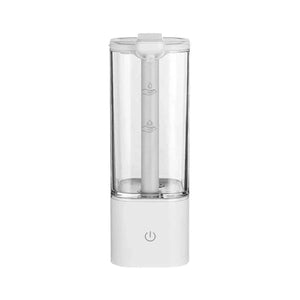Automatic Sensor Dispenser
Understanding Automatic Dispenser Sensors: Revolutionizing Hygiene and Convenience
In today’s fast-paced world, maintaining hygiene and convenience has never been more crucial. Automatic dispenser sensors have emerged as a game-changing solution for various environments, from homes to public spaces. This article delves into what automatic dispenser sensors are, how they work, and the benefits they bring to both individuals and businesses.
What Are Automatic Dispenser Sensors?
Automatic dispenser sensors are devices that dispense a predetermined amount of liquid or foam without the need for physical contact. These sensors typically utilize infrared technology to detect the presence of hands underneath the dispenser, activating the pump mechanism without any manual interaction. This feature significantly reduces the risk of germ transmission in high-traffic areas.
Types of Automatic Dispenser Sensors
There are several types of automatic dispenser sensors available on the market, including:
- Liquid Soap Dispensers: Ideal for bathrooms and kitchens, these dispensers provide a touchless experience for hand washing.
- Hand Sanitizer Dispensers: Essential for maintaining hygiene, especially in healthcare and public settings.
- Foam Soap Dispensers: These offer a richer lather while still maintaining a touchless experience.
- Multi-purpose Dispensers: Designed to dispense various products, including lotions and disinfectants.
How Do Automatic Dispenser Sensors Work?
The operation of an automatic dispenser sensor is straightforward yet effective. Here’s a breakdown of the process:
- Activation: When a user places their hands under the dispenser, an infrared sensor detects their presence.
- Dispensing: The sensor sends a signal to the pump, releasing a specific amount of liquid or foam.
- Deactivation: Once the hands are removed from the sensor zone, the dispensing mechanism shuts off automatically.
Benefits of Automatic Dispenser Sensors
Employing automatic dispenser sensors can transform hygiene practices in various environments. Here are some key benefits:
- Enhanced Hygiene: By eliminating direct contact with surfaces, these sensors significantly reduce the spread of germs and bacteria.
- Cost Efficiency: Many automatic dispensers are designed for optimal usage, minimizing waste and reducing overall costs.
- Convenience: Users can easily access the product without the need for buttons or levers, making it ideal for busy environments.
- Modern Aesthetic: The sleek design of automatic dispensers adds a modern touch to any space.
Choosing the Right Automatic Dispenser Sensor
When selecting an automatic dispenser sensor, consider the following factors:
- Type of Product: Identify whether you need a soap dispenser, sanitizer, or multi-purpose dispenser.
- Capacity: Choose a dispenser with an appropriate size for your location; high-capacity dispensers are ideal for public places.
- Power Source: Some sensors are battery-operated, while others can be plugged in. Consider which option suits your location best.
- Design: Select a dispenser that complements your decor while providing functionality.
Conclusion
Automatic dispenser sensors are essential tools for promoting hygiene and efficiency in today’s world. With their touchless operation, they not only help prevent the spread of germs but also enhance user convenience and reduce waste. By understanding the various types and benefits of automatic dispensers, you can make informed decisions that contribute to a cleaner and safer environment.























